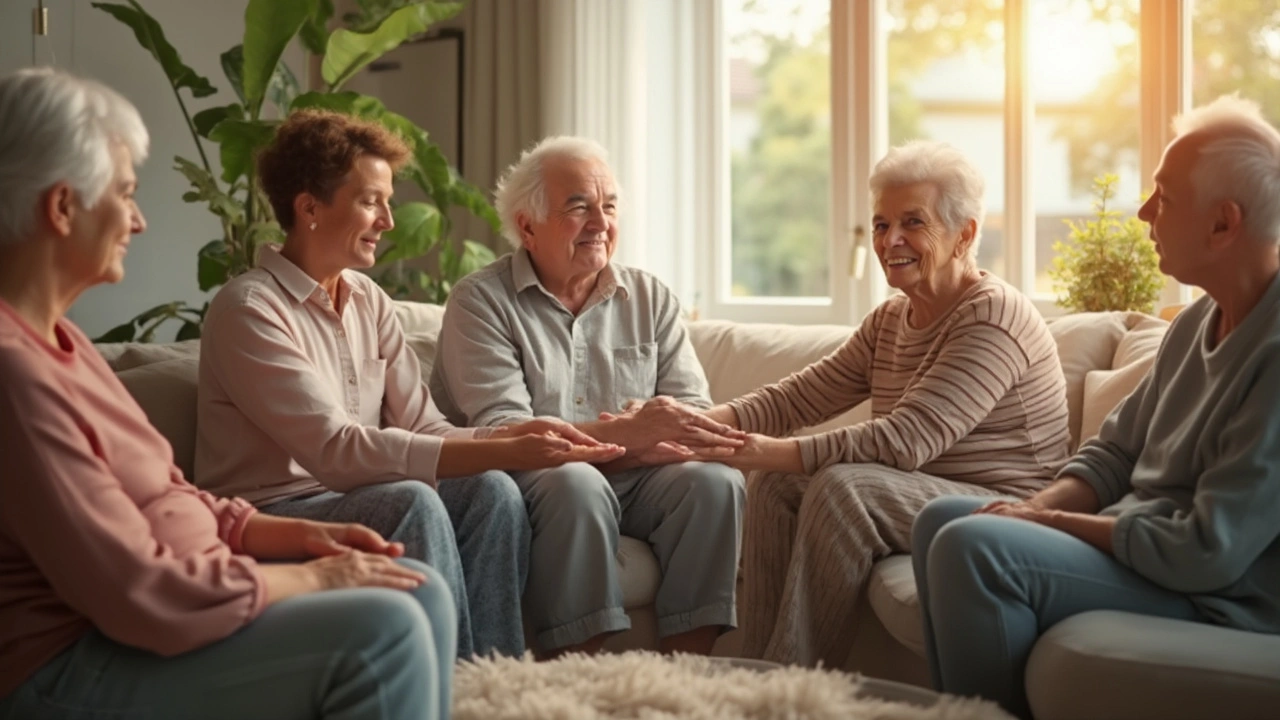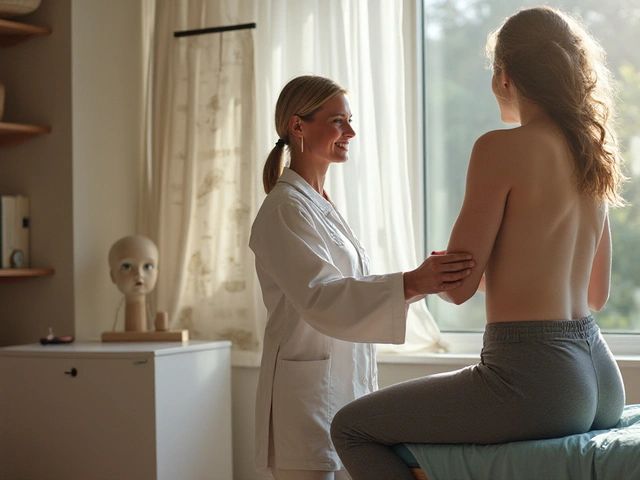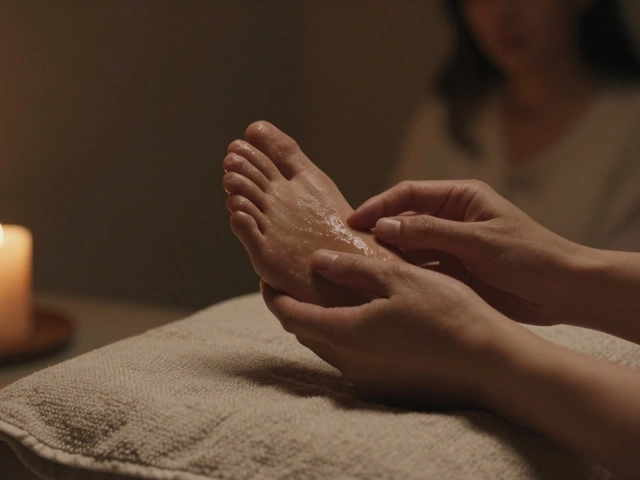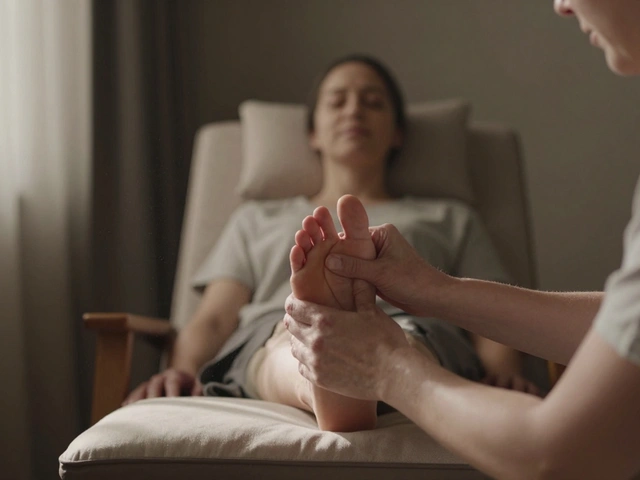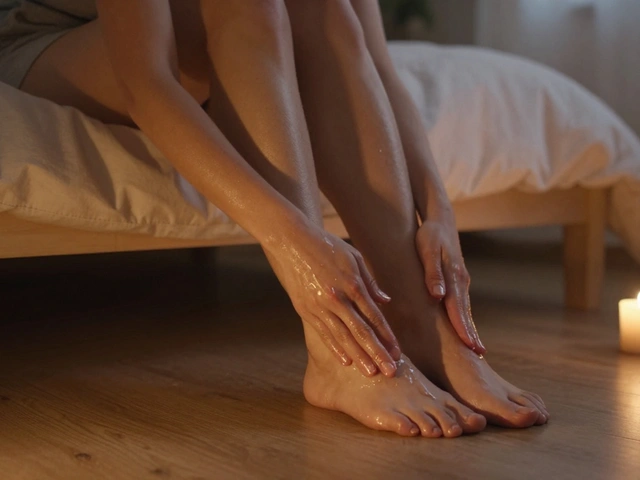If you've ever left a pain management clinic feeling like a walking pharmacy, you're not alone. More people are searching for something different, something that gets to the root of their pain without just masking it. That's where Ortho-Bionomy crashes into the scene—no needles, no popping or cracking, and definitely no guilt-tripping you for being in pain.
Ortho-Bionomy flips the usual script. Instead of pushing, it works with your body’s natural movements and reflexes. It's not just about getting you through the day; it’s about helping your body actually fix what’s wrong—gently. Plenty of folks say it’s like hitting a reset button on stubborn aches without the drama of tough manual therapies.
Right out of the gate, one of the most practical things about Ortho-Bionomy is you don’t need fancy equipment or a high pain tolerance. Believe it or not, the moves are often super subtle. You can even learn some techniques to use at home between sessions, which is a lifesaver when aches show up at the worst time—like before a big work deadline or after wrangling the kids all afternoon.
- What Is Ortho-Bionomy, Anyway?
- How Does It Actually Work?
- Why People Are Turning Away from Traditional Pain Treatments
- Practical Examples and Tips for Everyday Relief
- What to Expect During an Ortho-Bionomy Session
- How to Find and Choose a Practitioner
What Is Ortho-Bionomy, Anyway?
Ortho-Bionomy might sound like something you'd find in a science lab, but it's actually a pain relief therapy that puts comfort first. It was created in the 1970s by British osteopath Dr. Arthur Lincoln Pauls, who wanted something gentler than traditional chiropractic and physical therapy approaches. The whole idea? Work with your body, not against it.
This method uses small, precise movements, gentle positioning, and even just holding certain spots to help your muscles and joints relax. There's nothing wild or wild about it—you stay fully clothed, and most sessions feel pretty chill. Ortho-Bionomy tries to remind your body of what it’s supposed to feel like when things are working right.
"Ortho-Bionomy encourages the body’s self-corrective reflexes. Gentle, non-force techniques make it ideal for chronic issues and sensitive individuals." — Ortho-Bionomy Society of North America
That’s a fancy way of saying: the therapy helps your body remember how to heal itself, instead of forcing it to change through pain or pressure.
The biggest difference from other therapies? Ortho-Bionomy taps into your nervous system to release tension—without stretching, digging elbows in, or cracking any bones. The approach is almost like giving your body quiet reminders rather than loud commands.
It’s getting real traction among people with chronic pain (like fibromyalgia or arthritis), injury recovery, or even folks who just feel tense all the time. Here’s a quick look at why people are trying it:
- Super gentle—great for sensitive or injured bodies
- No side effects from medications
- Custom approach each session—no cookie-cutter routines
- You can learn self-care practices to use between appointments
Want some numbers? According to the Ortho-Bionomy Society’s 2023 survey, here’s how clients described their results after just six sessions:
| Reported Benefit | % of Clients |
|---|---|
| Less pain day-to-day | 74% |
| Better sleep | 61% |
| Increased flexibility | 58% |
| Improved mood | 49% |
So, Ortho-Bionomy isn’t about crushing pain into submission. It’s about being smart, gentle, and giving your body the nudge it needs to heal—without the drama.
How Does It Actually Work?
Most pain treatments go hard—pushing, pulling, even cracking your joints until something gives. Ortho-Bionomy does the opposite. Instead of forcing your body to change, it works with what your body already does well. The practitioner pays close attention to how your body naturally wants to move or rest, and uses those positions to help your body let go of tension.
The science behind Ortho-Bionomy is all about your nervous system and proprioception—which is just your body’s way of knowing where everything is. Here’s the trick: When your muscles are tight or your joints hurt, sometimes your body “forgets” how to relax. Ortho-Bionomy uses gentle positioning and easy movements, which send feedback to your brain, basically reminding everything that it’s safe to chill out again.
This isn’t just a feel-good guessing game. Practitioners use gentle techniques that might include:
- Lightly moving or holding parts of your body in comfy positions
- Simple rocking or compression for a few seconds
- Showing you easy movements you can repeat at home when tension creeps back in
Unlike old-school methods, nobody expects you to “push through” pain. In fact, discomfort is a signal to back off. The real magic of ortho-bionomy is that it helps reset your pain response without triggering more pain.
Some sessions even include educating you about postures or movements that worsen your pain. That way, you leave not just feeling better, but also equipped to keep those nagging aches at bay on your own.
Why People Are Turning Away from Traditional Pain Treatments
The usual way of handling pain often feels like a never-ending loop—pop a pill, tough it out, then repeat when the pain comes back. But here’s the thing: over 20% of adults in the U.S. live with chronic pain, and a lot of them are tired of relying only on meds or heavy-handed physical therapy. The frustration is real, especially when most painkillers just hide symptoms without actually solving the underlying issue.
Many of those same pain meds can cause nasty side effects like brain fog, stomach problems, mood swings, or even addiction. It’s no surprise that more people are hunting for safer alternatives that don’t come with a laundry list of warnings. Take a look at this quick rundown of why traditional methods leave so many people unsatisfied:
- Ortho-Bionomy doesn’t just mask pain—it targets what’s behind it
- No risk of “getting hooked” on pain meds
- No intense force or aggressive adjustments to dread
- You’re usually more involved in your own recovery
- A lot of people feel positive changes after fewer sessions
Check out how traditional pain treatments stack up against alternatives, based on studies from 2023:
| Method | Main Drawback | Common Side Effects | Average Satisfaction |
|---|---|---|---|
| Pain Meds (Opioids) | Dependence Risk | Nausea, Drowsiness, Addiction | 52% |
| Traditional Physical Therapy | Time-Consuming, Can Be Painful | Soreness, Fatigue | 58% |
| Ortho-Bionomy | Limited Public Awareness | Minor Short-Term Soreness | 74% |
Here’s the bottom line: the shift toward alternatives like Ortho-Bionomy comes from people wanting more control, fewer risks, and real relief—not just a quick fix that might come back to haunt them. If traditional stuff hasn’t worked, you’re definitely not the only one feeling stuck.
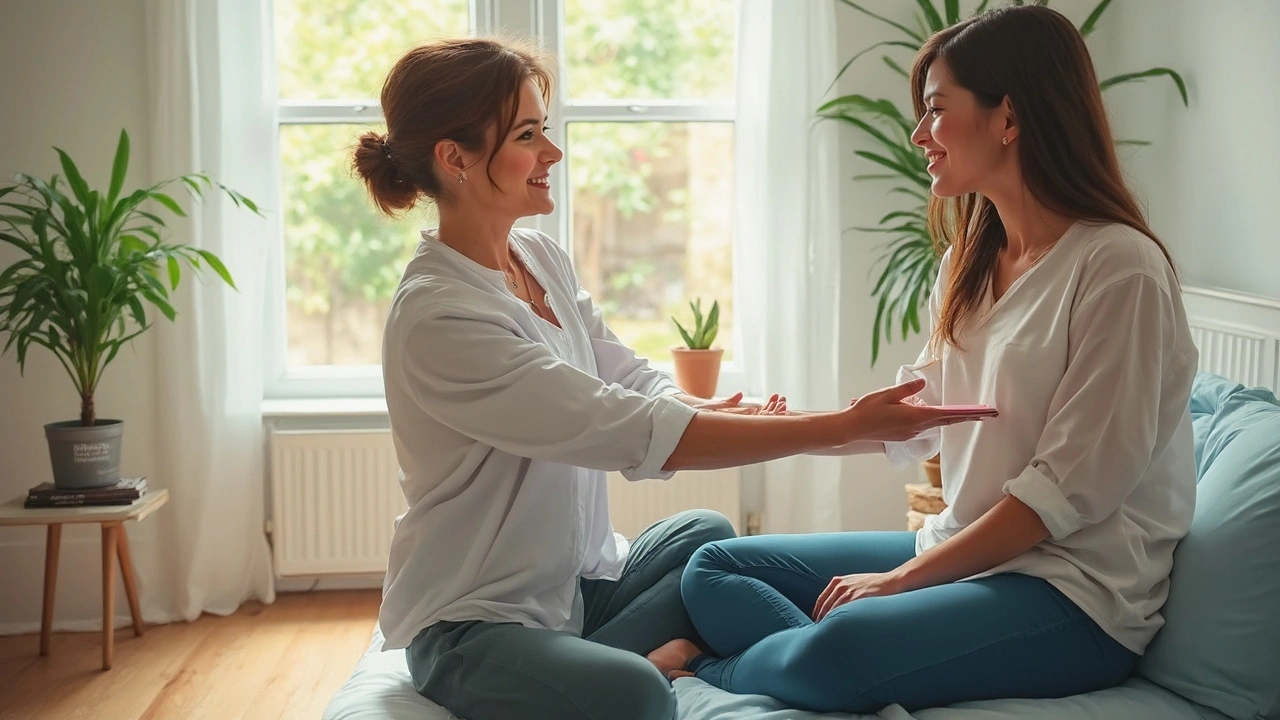
Practical Examples and Tips for Everyday Relief
Ortho-Bionomy stands out because it gives you practical tools you can actually use at home. You don’t need to be a pro or have a dedicated treatment room. In fact, lots of people are surprised by how simple some of these methods are. The key is working with your body—not against it—so you can ease pain without accidentally making things worse.
Let’s look at some simple moves you can try for common aches and pains:
- Neck tension: If your neck feels tight, try this: Sit comfortably, let your head tilt gently in the direction that feels easiest (not where it hurts), and hold the position for about 30 seconds. You might notice the muscles start to let go. Don’t force anything—your body knows the right direction.
- Shoulder pain from hunching over a desk: Roll your shoulders forward and then relax them, instead of pushing them back. Sometimes, relief comes from moving toward comfort, not away from pain.
- Lower back ache: When your back tightens up, lay down with your knees bent and feet flat. Let both knees gently roll to the side that feels more relaxed. Hold for a bit, then come back to center. This small movement tells your body it’s safe to release the tension.
One of the best parts? You don’t have to be perfect. Unlike stretches or yoga poses that take practice, these moves work by responding to your body’s feedback. If something feels better, hold it. If it doesn’t, tweak your position. In Ortho-Bionomy, comfort is always the boss.
Here’s a tip that surprises most folks: Ortho-Bionomy says, "move toward comfort." If something feels awkward or painful, don’t push harder. Find a position that feels a little easier, and give your muscles time—usually 20 to 30 seconds—to adjust. This taps into the body’s natural self-correcting reflexes. It’s a core idea behind ortho-bionomy and why people keep coming back to it as a pain solution.
Another practical tip: try body scanning. Once a day, stop and notice where you feel the most tension. Use the moves above, or just adjust your posture to see if you can make things 10% more comfortable. Small changes stack up, and you’ll start catching tension before it turns into something bigger.
Don’t treat this like a workout. Keep it relaxed. Ortho-Bionomy works best when you’re not trying too hard. Set a reminder on your phone, or make it a habit before bed. That way, pain relief fits into your life, not the other way around.
What to Expect During an Ortho-Bionomy Session
Walking into your first Ortho-Bionomy session, you can leave your worries at the door—there’s no heavy equipment, no surprise pain, and no awkward spa music (unless you’re into it). Most sessions happen on a regular massage table, and comfy clothes are the norm since you’ll stay fully dressed. The vibe is all about keeping things easy and no-pressure.
Here’s how things usually go:
- Brief chat: Your practitioner will ask about where you’re hurting or what’s bugging you. They’ll want to understand how you move, what makes things worse, and what helps.
- Gentle positioning: Instead of digging into sore muscles, the practitioner will support and move your body into positions that feel good—sometimes a little awkward, but never painful.
- Subtle movements: You might not even realize how small the movements are. The idea is to nudge your body’s nervous system into letting go of old tension, not force it.
- Feedback loop: You’re encouraged to speak up—if a position feels better, worse, or just weird. The session works best when you’re part of the process.
- Self-care mini-lesson: Many practitioners send you home with simple moves to try. These are usually things you can do anytime, anywhere—to keep the progress going between visits.
One standout thing about ortho-bionomy is that folks report real results fast. According to data from the Ortho-Bionomy Association of North America in 2024, about 86% of new clients said they noticed a drop in pain after just three sessions. That’s without any major side effects or downtime.
| Session Feature | What to Expect |
|---|---|
| Session Length | Usually 45–60 minutes |
| Clothing | Stay fully dressed, comfy clothing recommended |
| Pain Level | Almost always comfortable, no forced movements |
| Tools/Equipment | None (just a massage table or chair) |
| Aftercare | Personalized tips and easy self-care routines |
If lying on your back isn’t your thing, just say so—the practitioner can work with you in pretty much any position. Ortho-Bionomy’s all about adapting the session to fit you, not the other way around. And don’t stress if it feels different from other therapies you’ve tried; that’s actually a good thing here.
How to Find and Choose a Practitioner
Ready to give Ortho-Bionomy a shot? The trick is finding the right person so you actually get results—not just a relaxing session. There are over 2,000 certified practitioners in the U.S. alone as of 2025, according to the Society of Ortho-Bionomy International (SOBI). So, you’ve got options. But let’s narrow it down so you don’t waste time (or money) on someone who’s not the real deal.
Here are some key steps to make your search easier and smarter:
- ortho-bionomy directories: Your first stop should be the SOBI website (ortho-bionomy.org). They list certified practitioners by location, credentials, and training hours. That’s handy if you want someone officially recognized.
- Check credentials: Always look for a certification from SOBI or a recognized national association. If in doubt, ask about their training hours—a certified practitioner will have at least 500 documented hours.
- Interview before you book: A quick call or email goes a long way. Ask about their approach, experience with your type of pain, and what a first session looks like. Good practitioners don’t mind questions.
- Look for continuing education: The best ones keep learning. Ask them what workshops or courses they attended this year. It shows they’re up to date with the latest techniques.
- Online reviews: Google, Yelp, and Facebook actually tell you a ton—look for patterns, not just outliers. If three people say they felt heard and saw results, you’re onto something.
Here’s a quick breakdown of what the most trusted Ortho-Bionomy practitioners have, based on SOBI’s data:
| Requirement | Minimum Standard |
|---|---|
| Training Hours | 500 |
| SOBI Certification | Yes |
| Continuing Education (per year) | 12 hours |
| Professional Liability Insurance | Yes |
Don’t forget the vibe check. Personal fit matters—a lot. If you don’t feel comfortable or supported, it doesn’t matter how many certificates they’ve got. Most people find their best fit by trying one session and trusting their gut: Did you feel heard? Did they explain things clearly? That gives you more info than any website ever could.

